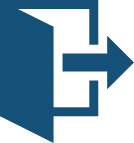TRANSCRIPTION
00:00:07:20 – 00:00:54:07
Mara Shorr
Welcome to Shorr Solutions: The Podcast. I’m one of the hosts. Mara Shorr, I’m a partner in the medical practice management company. Yes, Shorr Solutions. Who’s the other host, you may ask? Easy answer. That would be my father, our founding partner. Jay Shorr. Together, we now have an amazing team and clients across the country. Listen as we chat, converse, strategize and commiserate over life in the aesthetic medical industry.
It’s time for you to listen, learn, and be inspired as we help you kick start your practice. Because who doesn’t want a little more help? Welcome to Shorr Solutions: The Podcast.
00:00:54:09 – 00:02:17:13
Jay Shorr
Greetings and welcome back. My name is Jay Shorr and I am one of the partners in Shorr Solutions. We’re going to speak about what to include in your business plan, because when you fail to plan, you are planning to fail. Now, I know you’ve heard of these crazy expressions before, but it is the truth because in a plan you have to have an operational, administrative, financial and marketing business plan.
It is very important that you’re running this like a business because what is medicine? Medicine is a science. It is a way to keep us looking young and beautiful. It’s a way to keep us healthy. It is one of the most respected professions today, but never lose sight of the fact that it is a business. And we have, especially in the aesthetic cosmetic business, and we have to treat it like the business that it is and you have to have a plan.
If I said to you, why don’t you come over tonight for dinner, what would you say to me? Where do you live? And I’d say, This is my address. And you would plug it into your GPS system and then you click, okay. I said, I don’t care if it’s Google or navigation device, whatever. And that is your plan.
00:02:17:15 – 00:03:52:00
Jay Shorr
So what is a business plan? Well, a business operation plan consists of the following. It is a written document describing in detail how a new or an ongoing business is going to achieve its goals. You have to have goals. Operational, administrative, financial, marketing all to bring you the bottom line. And a business plan is going to lay out a plan for all of these items.
And it should be prepared for an established business that’s moving in a new direction. Maybe you’re bringing on a new product line. Make a plan for it. Maybe you’re moving from an insurance based practice to an aesthetic practice. Maybe you’re bringing on a new piece of equipment. Have a plan, a feasibility study on how this new piece of equipment or how your business is going to make you profit.
So what are the components of a business plan? Let’s start it out with a forecast because a forecast is something that we have in our mind that is a plan of an assumed or a calculated idea towards our goal. That is our forecast. And then we have to create and develop a plan towards that goal. The actual steps involved once again, including the operational, administrative and financial components of that.
00:03:52:02 – 00:05:29:21
Jay Shorr
And the end result will be calculated by that goal. And then we move on to a review and an execution. So we have to execute that goal. And this is by far the hardest thing that we have to do, because after we manage that plan, we have to execute all the details in it and it takes many people to do this.
They get involved and often it has to be changed along the way. And why? Because things happen. Maybe even a pandemic that we never planned for. So then we review it. We talk about having multiple different people along the way, and the human resource factor also may become one of the most complicated things. So then the plan has to be reviewed and then reviewed it again and then possibly even reviewed again.
And although it can be too micromanaged, more is better because the less hands on that you have in this process, the worse it’s going to become. Why? Because you haven’t properly planned for this. So marketing component has four factors. Remember, we did the operational, now the marketing. You have a product. What is the product, the good or the service that you’re going to provide for your patient base?
00:05:29:23 – 00:06:40:07
Jay Shorr
And what’s the price? What are you going to sell it for? And then now that you have a product and you have a price, how are you going to promote it? I’m positioning you in the industry as that resident expert. And lastly, where are you going to sell it? Where are you going to promote it? And in the retail business, it’s called the store.
In our business, it’s called a practice. Now, I don’t care whether or not you own the real estate. I don’t care whether you rent it. I don’t care whether you lease it. You need a place. So the marketing components consist of the product, the price, the promotion, and the place. Now we’ll talk about the financial component. You need to include the following in your business plan for your finances.
It’s a start up summary or a past performance table. A feasibility study. What is it that you’re going to sell? What is it that you’re going to provide? Where you’re going to do it? How much money are you going to make out of it? You’re going to have to have what we call a pro forma P&L. What does that statement include? That financial component?
00:06:40:07 – 00:08:13:17
Jay Shorr
When we create and devise business plans or our practices? We have bank statements. It includes prior tax returns. It includes tables of personal wages and salaries. Cash flow statements, balance sheets. The positive. The assets, the liabilities. What’s our breakeven analysis? Because you’re not going to make money in your first year, maybe two. So we want to have feasibility studies of what revenues do we think we’re going to generate, what expenses are devoted to obtaining that revenue, and what’s the bottom line?
Your appendix or your first year financials, EBIDTA. All right. It’s your earnings before interest taxes, depreciation. Many people call it the bottom line, the net profit. Now, remember, your net profit is way different than a gross profit. We’ll get into that in a little bit. Now we have our operational component. The operation plan gives you a detailed outline about the structure of your business manufacturing, distribution and patient acquisition.
What does it cost you to acquire a patient? Well, how do I know that? Well, how much money did you spend to acquire that patient? And how many patients did you get from the money that you spent? And that will give you a ratio. Hopefully it’s 3.5 to 1, which will yield you a 35 average percent margin. What are your federal and local state laws?
00:08:13:17 – 00:09:39:22
Jay Shorr
Because they can vary by extreme. Certain states allow certain people to do certain procedures. In Florida, for example, an RN, an aesthetician cannot perform lasers except for an aesthetician that has a electrology license, can perform laser hair removal. But nurses cannot do laser where in other states they can. Nurses can inject in Florida or other states and commonwealth they can.
So only PAs and NPs can here in Florida. So know your state laws, your operational component should include your CMS, continuing medical education availability and society updates. And where do I get my vendor selection and what are my transportation costs when I buy something for shipping and handling? And are there extra fees to get it today versus tomorrow or next week?
It’s kind of like the Amazon plan. I can get it today or tomorrow or I can get it in regular shipping. And what is your backup plan for your quality control measures? And do you have them in place? Because if A doesn’t work will B or C? So your operation plan also acts as a guide on inventory management and your purchasing procedures.
00:09:39:24 – 00:11:22:24
Jay Shorr
In business, we call it income and expense asset liability. The income is the amount of money that we bring into the practice. The assets, your expenses is how much you spend. Now, expenses can be listed as two different types. Your expenses can be costs or investment, and we’ll get into what’s the difference. Your income is your gross revenue.
Now, remember earlier I spoke about gross profit and net profit. Your gross profit is how much you have when you have your total revenue minus your cost of goods sold, also known as COGS, cost of goods sold. That gives you a gross profit. Then you have your deducts, which are your fixed and your variable expenses. And when you take your cost of goods sold and you subtract your fixed costs, your variable expenses and costs.
That will give you a net profit. Now you can have a positive gross profit and a negative net. So the need to purchase supplies and equipment, what’s important, well, you can’t sell from an empty shelf in a supermarket right. So that you have to know what is it that you have in inventory because your inventory or your your skincare products, your neuro modulators, your skin care, your dermal fillers.
00:11:23:01 – 00:13:02:11
Jay Shorr
This is supplies and equipment. These are things that you’re able to resell that’s your inventory. Then your results are going to increase with proper and well-maintained equipment. Now, what is my equipment? My equipment or my capital equipment, which is my lasers? It could be equipment, which is my exam tables. That’s capital equipment. But you need these to operate your business, although they’re not necessarily profit centers like your lasers are that generate revenue.
Make sure that your patients drive the need versus using these expenses to need to drive patients. And what do I mean by that? I mean, many times people will buy all kinds of capital equipment and lasers before they even have the patient base to do this. And you know what I call this? I call this house poor. It’s like buying $1,000,000 home or more, half a million dollars, whatever your value of what you can afford and not having any furniture to put in it.
That’s house poor. So what are you doing? You’re buying all kinds of expensive lasers and equipment, and yet you don’t have any patients to treat. So now what you say to me is Jay. But if I don’t have the lasers and I don’t have the capital equipment, I’ll have nothing to treat the patient with. That’s a double edged sword, because now I have to worry how do I drive that patient to my business if I don’t have anything to treat them with?
00:13:02:13 – 00:14:33:02
Jay Shorr
Now, financing is also going to be the key, a key to your cash flow. Financing. Is that financing to the patient or is that financing from a bank, a third party lender or an angel investor? Now, angel investors can be family, friends. It can be people that are nontraditional leasing companies or banks. And you are not necessarily subject to an amortization schedule.
You have principal and interest. You can have low interest only lines of credit. But with angel investors, you can set those terms of any way you want. With traditional lenders and leasing and finance companies, you’re usually subject to interest or lease payments predicated about what you negotiated on the front end. And so financing is a key factor in your business plan, and we help set that up from the very beginning.
So now we have facility management and maintenance activity. So what do you need to start? Well, location, location, location. So in order to have a location, you need real estate and you’re going to have to build up a buildout know that can be negotiated with rentals and leases called tenant and improvement, because what might be in second generation space may be facilities that are all built out already versus you’re going into prime real estate that is being built out for you.
00:14:33:04 – 00:15:58:15
Jay Shorr
And then you say, well, I don’t like this. I want to move the wall here. I want to put specific types of flooring here. I like this. I want tenant and improvement build out money on a may, need a couple months of free rent before I’m ready to start. You’re going to need supplies and equipment. You have to have a proper vendors and contractors.
Make sure they might be long bonded and licensed in short so that the event anything happens, you are well-protected. Like I said, proper financing and the knowledge of what is really required when you have your facility now, you need a design and a layout to ensure proper workflow storage because everyone goes into a facility, sometimes you go in and you don’t have a large enough space and everybody is working in front of one another and you don’t have storage or you don’t have enough outlets, you don’t have enough closets to hang all of your, you know, your copy paper or even any of the supplies and consumables that you have.
So what do you need to start? You need a good architect and a designer or a decorator have inspections and inspectors. And a lot of times they’re going to come from your local government, a plumbing inspector, a fire inspector, electrical inspector, a safety zone inspector. All right. So you need supplies, equipment, and most importantly of all, you need patients to treat.
00:15:58:17 – 00:17:12:14
Jay Shorr
So when you’re designing your layout to ensure proper workflow, what’s needed to start on the governmental side? Well, you’re going to need to apply for a certificate of occupancy when all this is done, because you can’t get that COO, certificate of occupancy, unless you had all these zoning, building, fire safety, mechanical, electrical, plumbing that I mentioned before, and make sure that you have the proper zoning to allow you to perform the type of services that you’re going to perform in the real estate and the area that you’re going to go.
So to summarize that, what’s needed to start that supplies, equipment, your vendor selection, biomedical waste vendors, that’s very important because don’t be schlepping it in your car. Don’t think that you’re going to be able to maintain that and move it from place to place. You’re going to need electronic medical records or practice management system. You’re going to need I.T. for information technology, legal and accounting, insurance, whether it’s workers comp liability for your practice, professional liability, and most importantly, staff. Organization and operation of your medical practice.
00:17:12:19 – 00:19:25:12
Jay Shorr
You need a great accountant. You need a great attorney, hopefully specializing in legal care and in health care. And you need a consulting group, work in your practice. Don’t work necessarily on your practice. Now, when you’re negotiating these, you need written contracts because I spoke about contracts before. Nothing verbal ever holds up except in poker. If you’re going to bring on an associate or a partner, have a partnership agreement, a buy sell agreement, have a contingency and plan in the event of any type of a catastrophic event.
Have an organizational chart of who does what. Have job descriptions for every level and every position in your office and have policies, procedures, and protocols for each and every phase of your business, your consents and things like that. And with your staff. When you’re hiring your staff with your job descriptions have something involved that talks about performance reviews.
I said before, when you fail to plan, you are planning to fail, remember? What is it that you want to include in your business plan? It’s an operational plan, administrative plan, financial plan, a marketing plan. Make sure that you have what it is that you want to include in it. Make sure that you are going to execute it and make sure that you review it.
Review it again and review it again. And if you have to always be able to come back to the drawing board, try to incorporate accountants, attorneys, consultants, other people so that you know what to include in your business plan. Ladies and gentlemen, good luck. God bless. Stay safe and we will see one another real soon.
00:19:25:14 – 00:22:21:21
Mara Shorr
So acquiring, converting and retaining new loyal patients is easier than you think. It requires you mastering the sales funnel in your aesthetic practice. How is it that easy, you ask? Well, it’s easy because we teach you step by step in our conversion cascade online course, a fun and results driven course that you and your team can finish in less than 5 hours.
Yes, less than 5 hours. Because we know you all are busy. We provide you six training videos that walk you through attracting new patients, converting calls to consults, consults to treatments, and keeping your patients coming back for more. All of this while learning how to talk to your about additional treatments and procedures to achieve their dream results and bonus, Boost your revenue and have them singing your praises to others.
With our course, you also get tangible tools to help you succeed, such as downloadable marketing checklists, phone scripts, conversion tracking spreadsheets and more, all of which are completely customizable and editable for you and your practice and your team. Get started and sign up for our conversion Cascade Online course today. And as a special thank you for being a podcast listener, we’re giving you 10% off.
Yes, 10% off. Just enter the Discount Code PODCAST. Yes, the word podcast to start saving, click the link in our show notes to get started now. Increase revenue and acquire more patients for your practice today.
So that wraps up today’s episode of Shorr Solutions: The Podcast. If we mentioned any quote, links in our show notes, be sure to check them out for the easiest way to discover your best solutions you can find them. Yeah. In our show notes.
We love your help in spreading the word about our podcast. How? Rate us and share this episode with your friends, colleagues, and the rest of your team. Remember to follow us on social media @Shorr Solutions and send us a message directly with your burning questions. We love hearing from you. Just sign up for our newsletter to be the first to find out about our upcoming webinars.
The latest tips on running your practice more efficiently, dealing with the issues of drama and money in your practice, and watch the latest videos and blog posts in your inbox right in real time. Now’s the time to join at www.shorrsolution.com and click on the e-newsletter button in the top right hand corner. We’ll see you next time. And remember to subscribe to this podcast and leave us a review.














